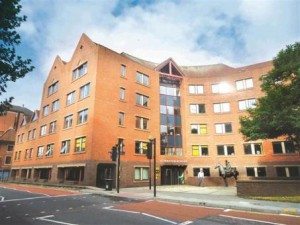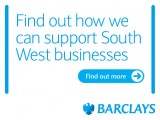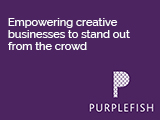Bristol’s office investment market has never been hotter as a tidal wave of money – much of it from international funds – arrives in the city, according to a new report.
Middle Eastern money and US private equity is targeting Bristol city centre buildings as the London market overheats, pushing up rents and values.
The scramble to get into the market meant one building coming onto the market – the former Bristol City Council-owned Brunel House – attracted 40 interested parties, many of them looking at alternative uses. 
According to the report by Bristol property agents Hartnell Taylor Cook (HTC), buildings worth £540m were offered to the market last year with more than £300m actually being sold and another £124m currently under offer.
HTC partner Ian Lambert, pictured, said: “With these deals in solicitors’ hands, it’s likely that close to £430m will be transacted in the year.
“What we have here is something of a perfect storm. There is a deep investor pool, looking for value in the regional cities. There’s a more confident occupier market, which combined with a lack of quality new stock and dwindling supply of secondary and tertiary buildings – thanks largely to Permitted Development Rights (PDR) conversions – means that rental growth is likely.
“The higher investor interest is, the more likely development takes place, and the greater the chances of employers investing in Bristol, providing the jobs for the city to continue to grow economically. And the good news is it probably won’t be slowing down very soon.”
Mr Lambert pointed to St Bartholomews House in Lewins Mead, pictured left, as a demonstration of how hot the market is. HTC was instructed to sell the 33,505 sq ft five-storey office building for a guide price of £4.473m. 
“We had seven bids in at or above the asking price. Everything being sold has several disappointed under-bidders,” he said.
“Supply is tight. Around 1m sq ft of older property has been removed from the market through PDR [which allowed conversion of office space into residential without the need for planning permission], with older buildings around Lewins Mead in particular being converted to student and private residential accommodation.
“We’ve probably now seen an end to that trend, and this is seen in the Pithay, the 180,000 sq ft landmark building which looked like it could be Bristol’s first PRS (private rented sector) residential scheme, but is now being re-presented by Resolution Property as offices for the creative sector.”
Another signal of the strength of the market was the sale last year of the St Mary Le Port area next to Castle Park and Bristol Bridge to Goodman for £24m. The deal includes the Lloyds and Bank of England buildings along with the Prudential Buildings.
“It’s the best site in the city centre,” said Mr Lambert. “Delivered right as an office-led mixed-use scheme, it will be a huge boost for Bristol. With Finzels Reach across the river coming along, with a new bridge set to link it to Castle Park, this is suddenly a very exciting part of Bristol.
“At some point soon, somebody on the development side has got to put a spade in the ground and create some new product. They might look at Skanska’s success at 66 Queen Square, where the developer got their reward for speculatively starting a fantastic building, which pre-let well and sold for a very good price.
“The institutional investors will be busy putting together their strategies for 2016. As long as Bristol continues to have a strong story to tell, it should remain a key target for investors.”
Meanwhile, a report by property advisers CBRE shows Bristol has attracted over £3.5bn of commercial property investment over the past 10 years. 
Core Cities, Core Strengths, analysed 12 of the major regional cities outside of London across the UK, with Bristol coming sixth in the rankings behind Manchester (£8.2bn), Birmingham (£6.5bn), Glasgow (£5.3bn), Edinburgh (£4.9bn) and Leeds (£3.7bn) for total commercial property investment in the last decade. However, Bristol features third in the rankings when it comes to total industrial investment (£501m), behind only Aberdeen (£603m) and Birmingham (£541m).
CBRE’s report address the key indicators for a city’s success: civic leadership, talent in growing sectors, quality of life and ‘placemaking’, and infrastructure, providing a detailed review of the main city property markets outside London, and the opportunities and risks of devolution. It also includes ‘softer’ indicators such as the number of 5-star hotels or Michelin star restaurants.
CBRE head of investment in the Bristol office Andrew Sayner, pictured above, said: “Bristol has once again proved itself as the Gateway to the South West, with high levels of demand coupled with limited supply, forcing growth to come through in commercial properties throughout the city.”
In total, the regions beyond London and the South East accounted for almost 60% of all UK commercial real estate transactions. The findings show that investors have diversified their property holdings as part of the recent economic recovery, with emerging investment sectors such as healthcare and student housing increasing their share of the market.
Pre-financial crisis, these assets accounted for 3% of investment; this has trebled to around 10% of total investment volumes today. Overseas investment into the regions has also reached its highest level since 2007, with double the amount of investment in 2015 compared with 2013.





























